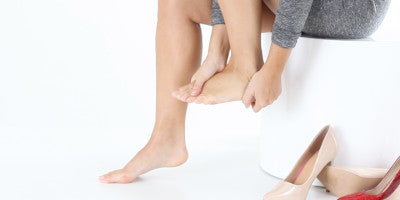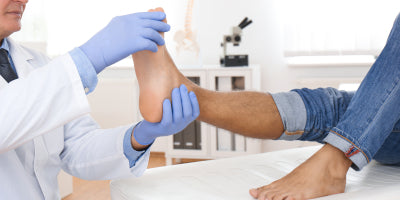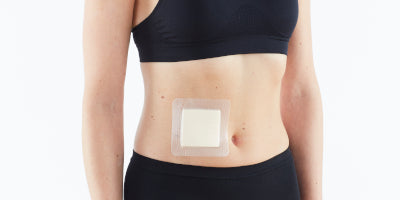How to stay positive when injured

If you live an active lifestyle or are a regular gym goer or sportsperson, slowing down and taking the time off to recover from an injury can be a tough pill to swallow. We all know how important rest and recovery are when healing from an injury, but being unable to do the exercise you love, along with uncertainty about how long the recovery process might take, can take its toll, leading in some cases to serious stress and post injury depression.
However difficult it might be, staying positive when injured is really important, both for your physical and your mental wellbeing. Here are some steps you can take to support your own recovery.
How to cope with injury depression
When you’re no longer able to do even the simplest of activities you love, it can really affect your mindset so it’s so important to maintain a positive attitude when recovering from an injury. Here’s some tips on how:
- Stay positive with a realistic perspective. It’s often easy to catastrophize and think that you’ll never be able to get back to full fitness - but is that really the case? As hard as it maybe, try and put your injury into perspective, remembering times when you have been injured and made a full recovery, or perhaps thinking of sportspeople you admire who have overcome adversity. Staying positive, motivated and focused is key to helping you achieve your end recovery goal.
- Break your recovery down into manageable chunks. The road to recovery can look long and overwhelming, so try breaking it down, week by week. Working with a professional, look at rehabilitation exercises and stretches you can do, building on this each week so you can feel like you’re making progress. It can help to plot this out on a visible calendar that you can refer to when you’re feeling low, focusing on how far you have come since your initial injury.
- Ask for help. When in the midst of injury it’s important to focus on the future and remember that this time will pass. Focusing on your identity outside sport and exercise can help, remembering the other parts of your life that you love. Don’t be afraid to talk to family and friends about how you’re feeling, and look to other hobbies for enjoyment during the recovery process.
- Don’t run before you can walk. There will come a time in the rehabilitation process when you’ll feel better and want to jump back in to your full routine, but exercise with caution. Returning to your usual routine too early could exacerbate your injury, leaving you back at square one. Work with a professional on a plan for a phased return, and don’t be afraid to use extra support while recovering.
How to prevent muscle atrophy when injured
Being out of the game due to an injury doesn’t only have an effect on your mental health - it can also lead to your muscle strength beginning to waste away in a process called muscle atrophy. This can be very frustrating when you have worked for months or even years to build up your muscle tone, but there are things you can do to help prevent muscle atrophy when injured.
Rest is important, but you should be able to move on to light exercise around two weeks after your injury, depending on the severity. Once you have the go ahead from your doctor or physiotherapist, try to incorporate swimming into your routine. Swimming is the perfect way to ease back into it, as it’s a light resistance exercise and the water supports your body, helping to alleviate the stress of impact.
Once you’ve finished your swim the perfect next step is heading to the sauna. Studies have found* that a 30-minute hyper thermic treatment reduced muscle atrophy by 20%. This is because the extreme heat of a sauna triggers HSPs - heat shock proteins - which can reduce atrophy.
What nutrients repair injured cells?
Another key part of your recovery from an injury and preventing muscle atrophy is ensuring you’re fuelling your body with the nutrients it needs to recover. Try including the following in your diet to speed up recovery:
Protein
Protein rich foods like meat, fish, eggs and tofu should be a key part of your post-injury diet. Protein is an essential nutrient for muscle building and repair, helping to aid your recovery.
Omega 3
There is lots of evidence that this essential fatty acid has anti-inflammatory properties, which is going to help when you’re healing from an injury. Top up your diet with oily fish, avocado and nuts to reap the benefits.
Zinc
Zinc can play an important role in the healing process, helping to promote new tissue growth and repair torn tissue. It is commonly found in chicken, beef, shellfish (such as oysters), lentils and seeds.
Vitamin C
Vitamin C has many benefits, including helping stimulate collagen production, which can help your body rebuild tissue after an injury, as well as boosting ligament repair. Look for vitamin C in natural sources, such as oranges, strawberries, kiwis and broccoli, or alternatively vitamin supplements can provide key nutrients to help balance your daily intake.
We hope this helps give some guidance and support but we would always recommend seeking professional help if you feel you are continually struggling with any of the areas referenced above.
Thank you for reading and good luck with your recovery.
*Dr Rhonda Patrick, University of Tennessee – studies on ways to reduce muscular atrophy. Men’s Health Magazine 28/05/2015











